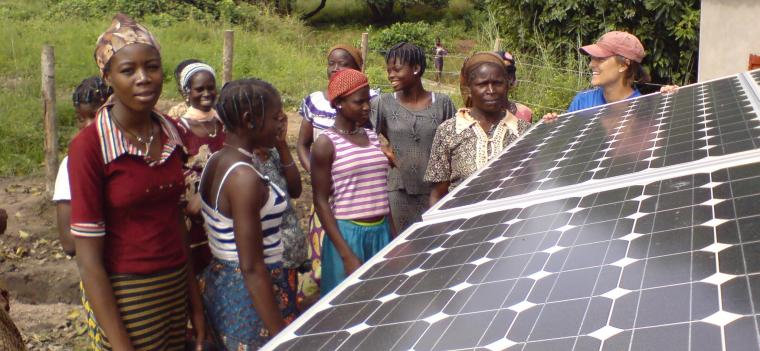News
- The World Bank is helping to boost solar energy development in West Africa with a new project designed to identify locations for large-scale solar parks.
- Building on investments already made in West Africa’s regional power trade, the project aims to mobilize private sector financing in solar energy.
- ESMAP laid the groundwork for this large-scale investment in renewable energy by providing the solar measurement data, regional least-cost planning, and pre-feasibility analyses.
Access to energy remains a challenge in West Africa where many countries are dependent on expensive imported fossil fuels. The World Bank estimates that integrated power trade in the region could promote cost savings of US$5-8 billion per year by enabling countries to import cheaper sources of electricity, increasing access to affordable, reliable and modern energy, and reducing CO2 emission intensity.
The West African Power Pool (WAPP) was created to integrate national power systems into a unified regional electricity market. It is a cooperation of 29 utilities across 14 countries—Benin, Burkina Faso, Ivory Coast, the Gambia, Ghana, Guinea, Guinea-Bissau, Liberia, Mali, Niger, Nigeria, Senegal, Sierra Leone, and Togo—working towards an integrated regional power market.
To date, the World Bank has dedicated US$750 million to support the WAPP in its efforts to build regional high voltage transmission lines and create a robust regional electricity market. Phase 1 of the newly approved Solar Development in Sub-Saharan Africa Series of Projects will further assist the WAPP by helping to identify opportunities for solar project development and strengthen the capabilities in its member utilities to integrate variable renewable energy into their grids. This regional approach to solar investment will allow the WAPP to harness an abundant natural resource to ultimately lower electricity costs and reduce dependency on expensive and polluting fossil fuels, while taking advantage of recent decreases in the cost of solar technologies.
The Energy Sector Management Assistance Program (ESMAP) has bolstered this investment in a number of ways.
ESMAP conducted a least-cost planning exercise for the WAPP region and analysis on battery storage. Data from the Global Solar Atlas was used in the analyses, which provided country-specific solar deployment strategies and a comparison of two solar development approaches: a regional collaborative approach and an independent approach where countries do not share resources. These efforts will underpin subsequent projects in the series—solar parks in Burkina Faso, Mali, and the Gambia, as well as smaller projects in Guinea Bissau, Guinea, and Togo.
In addition, ESMAP-funded analysis is examining possibilities to develop hydro-connected ground-based or floating solar plants in the WAPP region. This innovative approach allows for the hydropower plant to serve as a large battery, smoothing variable solar output, and shifts power production to solar during daylight hours, utilizing the water saved to meet high demand during evening hours. This analysis will help to identify future operations to be financed under the series.
It is expected that the private sector will contribute the largest share of financing for solar generation projects in the region. The World Bank’s investments and ESMAP’s activities are working to de-risk projects and create an environment conducive to private financing of large-scale solar plants.
